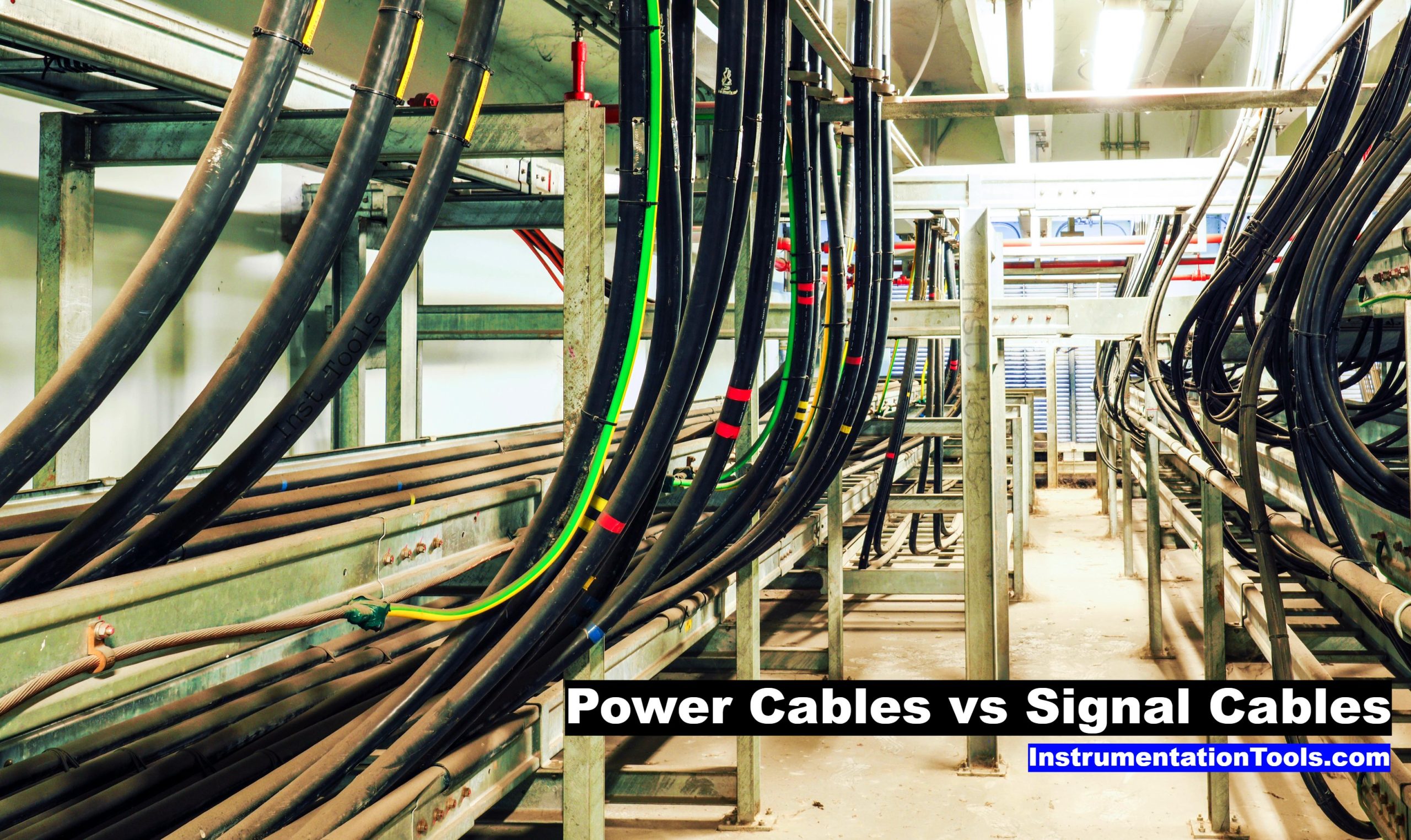The signal cables and power cables are two types of cables often used in automation systems, each serving a unique purpose. Understanding the difference between power and signal cables can help you determine the right cable for a specific application.
Signal Cables
Signal cables are integral to the functioning of any modern industrial automation system. Signal cables carry low-level electronic signals between devices or within a device.
Signal cables facilitate communication in different forms, including data signals, such as Ethernet or Fieldbus communication, and low voltage analog or digital signals, such as 4-20mA current loops or 0-10V signals.
Characteristics of Signal Cables
1. Shielding: Signal cables are typically shielded to protect against electromagnetic interference (EMI), which could corrupt the signal and lead to inaccurate data transfer. The shielding can be a layer of conductive material, usually a type of metal, that surrounds the conductors. This metal layer is grounded, so any interference will be absorbed by the shield and diverted to the ground, instead of affecting the signal.
2. Twisted Pairs: Signal cables often use a configuration known as twisted pairs to reduce interference even further. In a twisted pair, two conductors are twisted around each other at regular intervals. This arrangement helps to reduce the influence of external electromagnetic fields and to minimize cross-talk between signals in different pairs in the same cable.
3. Lower Current Carrying Capacity: As their primary function is signal transmission, these cables are designed for lower current and voltage levels. They are not intended to carry significant power loads.
Power Cables
Unlike signal cables, power cables are primarily designed to transmit electrical power. They are used to connect an electrical source to a device or a piece of equipment, delivering the necessary power to operate.

Characteristics of Power Cables
1. Higher Current Carrying Capacity: Power cables are constructed to handle higher current and voltage levels. This is a critical feature, as these cables need to safely and effectively transmit the power required to run various equipment and devices.
2. Robust Insulation: Given the higher voltage and current levels, power cables are equipped with robust insulation to protect against electrical faults and to ensure the safety of operators.
3. Variety of Sizes: Power cables come in a variety of sizes, typically denoted by the cross-sectional area of the conductors. The size required depends on the amount of power that needs to be transmitted.
4. May Be Shielded or Unshielded: Depending on the environment and specific application requirements, power cables may also be shielded, particularly if they are used in environments with potential EMI.
Difference between Power Cables and Signal Cables
In the below table, we discussed the comparison between signal and power cables.
| Details | Signal Cables | Power Cables |
|---|---|---|
| Purpose | Transmit low-level electronic signals or data. | Transmit electrical power. |
| Type of Connection | Connect devices for data or signal transmission. | Connect electrical source to devices or equipment. |
| Current Carrying Capacity | Lower, since they are for signal transmission. | Higher, since they are used to transmit power. |
| Shielding | Typically shielded to protect against EMI. | Can be either shielded or unshielded, based on need. |
| Insulation | Standard insulation for data transmission. | Robust insulation to protect against electrical faults. |
| Conductor Configuration | Often uses twisted pairs to reduce interference. | Variety of sizes to accommodate power transmission needs. |
| Conductor Material | Usually composed of copper. | Can be aluminum or copper, depending on power needs. |
| Voltage Rating | Lower voltage rating. | Higher voltage rating. |
| Physical Size | Generally smaller and lighter. | Generally larger and heavier due to insulation needs. |
| Cost | Cost depends on data transfer needs and shielding. | Cost depends on power capacity, material, and size. |
| Interference Susceptibility | Can be affected by EMI; hence, often shielded. | Connect the electrical source to devices or equipment. |
| Examples | Data communication, sensor signal transmission, etc. | Power supply to machines, motors, transformers, etc. |
Conclusion
In conclusion, signal cables and power cables serve fundamentally different purposes. Signal cables are designed to carry low-level signals and ensure reliable communication between devices, while power cables are intended to transmit the electrical power needed to operate the equipment. By understanding these differences, you can select the right type of cable for your specific application, ensuring optimal system performance and safety.
If you liked this article, then please subscribe to our YouTube Channel for Electrical, Electronics, Instrumentation, PLC, and SCADA video tutorials.
You can also follow us on Facebook and Twitter to receive daily updates.
Read Next:
- Single Core and Multi-Core Cables
- Difference Between HV and LV Cables
- Types of Cables in Industrial Automation
- Instrumentation Cables Testing Steps
- Flame Resistant and Retardant Cables